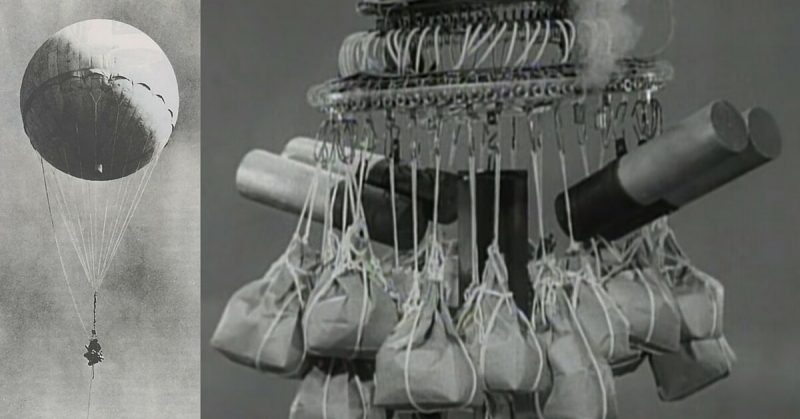Most believe that those at Pearl Harbor were the only casualties on American soil during WWII. Not true. There were more in Oregon. The Japanese were also responsible for that second attack, using the longest-ranged weapons in history – a record not beaten till 1982. But what makes it even more interesting is that no planes or ships were used.
To understand this, we have to go back to the 13th century. In 1274 and 1281, Kublai Khan ordered his Mongol fleets to invade Japan, but they were destroyed each time by typhoons. The Japanese therefore believed that they were protected by Kamikaze – a divine wind.
This fascination with the wind led Wasaburo Oishi, a Japanese meteorologist, to make an important discovery. In 1926, he published a paper proving the existence of a strong air current flowing over Japan from November to March – what we now call the Jetstream. It was so powerful, in fact, that it could actually reach the American continent.
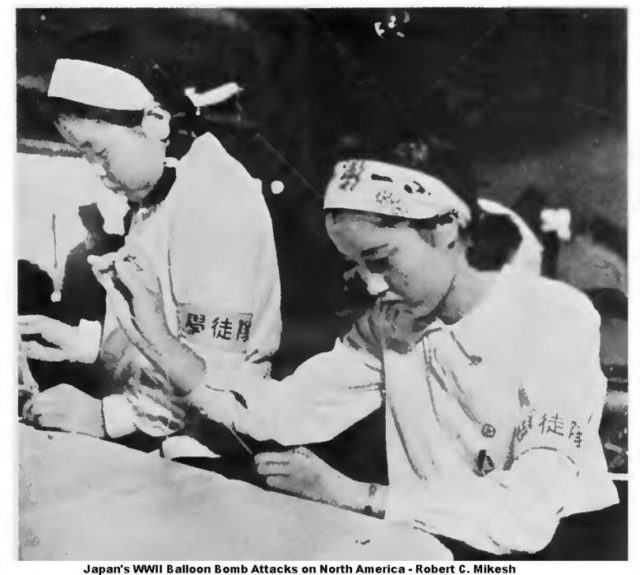
Fast forward to December 7th, 1941. Japan bombed Pearl Harbor, drawing the US into WWII. America retaliated on April 18th, 1942 by launching a bombing spree over the Japanese Home Islands – an event known as the Doolittle Raid.
Fuming, the Japanese thought up various ways to retaliate. Among the ideas floated was by the Ninth Army’s Number Nine Research Laboratory after it came upon Oishi’s work. Since the Jetstream could carry a weather balloon over 5,000 miles, why not pack them with explosives?
After much experimentation, however, they found a flaw – they couldn’t control the things. But hydrogen-filled test balloons did reach the continental US in three days. If they could launch enough, it was estimated that at least 10% should reach the Americas and cause enough damage to burn forests and cities, causing panic.
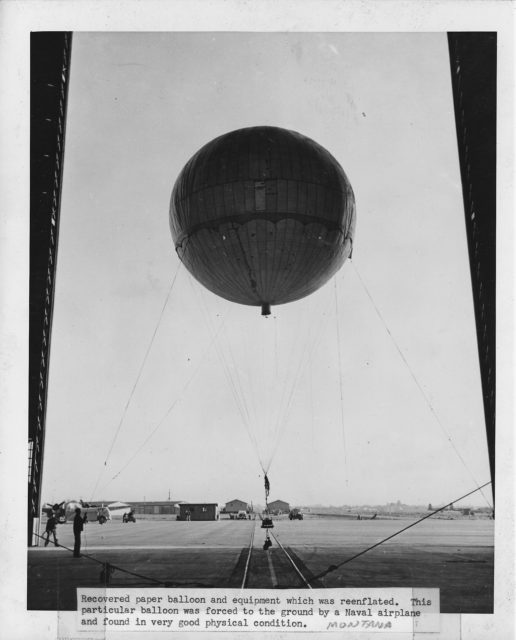
The Imperial Army loved it! But they had an even better idea – why not load those balloons with anthrax and bubonic plague viruses? They’d been cultivating such nasties from unwilling Chinese subjects, and by 1944, had enough cowpox viruses to contaminate the entire US.
There was only one problem. They couldn’t ensure that the viruses would survive the journey long enough to do harm. And what if some blew back to Japan, as two later did? So they returned to the original plan – and thus was born Project Fu-Go (Code Weapon), better known as fūsen bakudan (balloon bomb).
To maximize their chances of reaching the Americas, different sizes were made to accommodate three types of bombs: (1) a Type 92 33-pound high-explosive bomb, (2) a Type 97 26-pound thermite incendiary bomb, and (3) an 11-pound thermite incendiary bomb
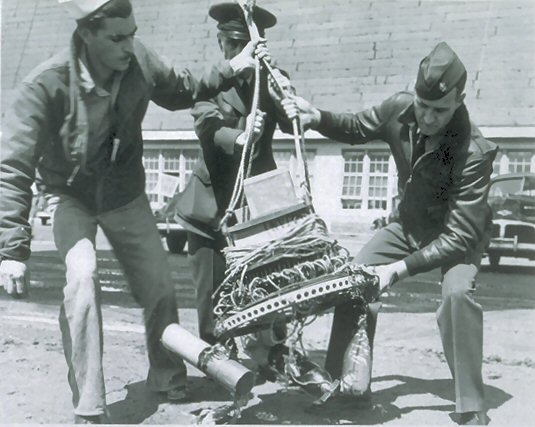
Since many of the original rubberized silk balloons sprung leaks and were costly to make, they resorted to using washi, instead. Washi is tough, waterproof paper made from mulberry bushes. To glue the sheets together, they used konnyaku paste – an edible foodstuff. And that’s where they faced their first problem.
Japan was suffering from a labor shortage, so they used high school girls to do the gluing. And since there were also food shortages, many couldn’t resist eating the paste, slowing the project down.
Their second problem had to do with how hydrogen balloons react to different temperatures – rising when warm and sinking when cool. So they built a wheel that not only held the bombs, but also contained an altimeter and ballast.
If the balloon rose over 38,000 feet, the altimeter would activate a valve to release hydrogen. If it fell below 30,000 feet, then an electrical charge would dump some ballast.
A squadron of 1,500 men was tasked with launching the balloons, all stationed at different beaches along Japan’s eastern coast. The first set of what would be 9,300 balloons were sent aloft on November 3rd, 1944 – though some carried only radiosonde equipment to track the rest.
Over the next several months, more made their way to Canada, the US, and Mexico, but with little effect. Since the Jetstream only flows during the winter months, those that made it landed in snow-filled North American forests.
Seven balloons were handed over to the authorities, though two cowboys in Yerington, Nevada used the one they found to cover hay. Still, the American and Canadian governments were rightly afraid of forest fires.
A few were shot down by their respective air forces, but the balloons kept on coming. Thanks to a news black-out, the Japanese had no way of knowing how effective the balloons were, though their press made up wild stories of massive carnage in the Americas.
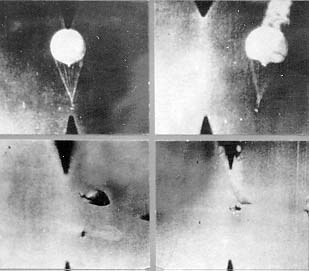
Despite the censorship, a growing number of Americans and Canadians were talking about the balloons by early 1945, giving rise to conspiracy theories. Many suggested that they were being launched by submarines off the coast. Others blamed the Germans.
On February 1st, 1945 residents of Hayfork, California saw a balloon floating over the Trinity National Forest. When it started to sink, they followed it to a tree where it exploded. Fortunately, no one was hurt or killed.
Several weeks later, on March 10th, one short-circuited the Hanford site in Washington State. This was the plutonium-processing plant responsible for the uranium used in the bombs dropped on Hiroshima and Nagasaki.
The news blackout was so effective that Japan stopped launching more balloons in April. Unfortunately, it also cost six people their lives.
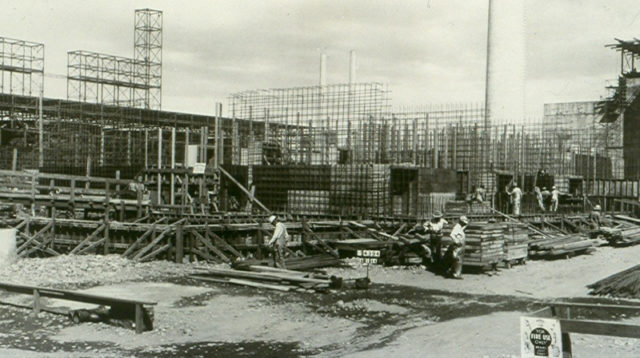
On May 5th, Archie Mitchell and his pregnant wife, Elsie Winters, went on a picnic near Bly, Oregon. With them were five of their Sunday school students who ranged from 11 to 14.
While Archie got their stuff out of the car, Elsie and the children went off to find a picnic spot when they saw a balloon on the ground. Then he heard was one of the kids shouting, “Hey, look what I found!” before the explosion hit. Archie was the only survivor.
Forensics experts believe that the balloon landed days before, and was only detonated when one of the children touched it. But it doesn’t end there.
It’s believed that about 300 reached the Americas, many of which remain undetonated. On October 10th, 2014 two loggers in the Monashee Mountains near Lumby, British Columbia found the half-buried remains of one bomb.
Although the Canadian authorities blew it up on the spot, who knows how many more are still out there?
